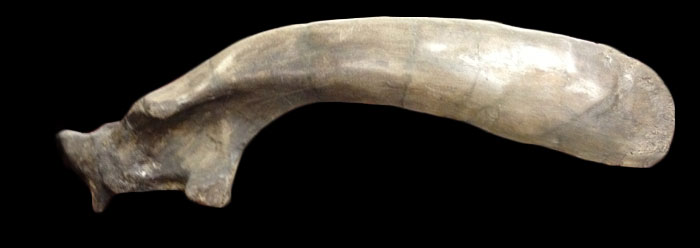Original dinosaur tissues in fossil bones are probably the most controversial finds in all of paleontology. Secular scientists have difficulty interpreting them. They debate whether the tissues are real, based on laboratory-measured tissue decay rates, or whether the tissue decay rates are real, based on plainly observed tissues.
The latest report on this subject characterized original dinosaur biochemicals found inside fossil bones, and it adds further proof of the chemicals' originality.
Many of those who are familiar with the rapid pace of tissue decay, which occurs as the tissues oxidize into tiny chemicals, have insisted that what looks like dinosaur blood vessels and cells is actually bacterial biofilm. Certain bacteria can produce slimy film structures as protective coatings. The study authors wrote in the journal Bone, "It has been proposed . . . that the [dinosaur bone] 'vessels' and 'cells' arise as a result of biofilm infiltration; but no data exist to support this hypothesis."1
North Carolina State University's Mary Schweitzer and lead author of the study used an array of different techniques to analyze the apparent bone cells inside the dinosaur bone. One method used antibodies, which are chemicals that bind to specific targets. She and her co-authors found that antibodies known to bind chemicals that vertebrates, not bacteria, produce clearly indicated that original vertebrate proteins were in the dinosaur bones.2
Thus, not only is there no data to support the biofilm idea, but there is plenty of data to outright disprove it.3 Schweitzer and her colleagues wrote, "Here, we present morphological, microscopic, and chemical evidence that these are indeed altered remnants of original cells."1
So, the problem with finding soft tissues in dinosaur and other fossils only remains a controversy for secular scientists who will not yield, no matter what the evidence says, on their insistence that these artifacts are millions of years old. After all, without that unscientific assumption, all the actual science makes sense.
Reference
- Schweitzer, M. H. et al. Molecular analyses of dinosaur osteocytes support the presence of endogenous molecules. Bone. Published online before print, October 16, 2012.
- Specifically, antibodies reacted with non-bacterial proteins Actin, Tubulin, PHEX, and Histone H4.
- See also: Peake, T. Small Foot, Big Impression. Phys.org. Posted on Phys.org July 24, 2007, accessed October 26, 2012.
* Mr. Thomas is Science Writer at the Institute for Creation Research.
Article posted on November 5, 2012.

















